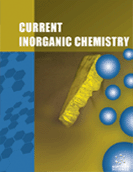Abstract
Polycrystalline new Na6Pb4(SO4)6Cl2:(Ce3+; Ce3+ →Dy3+; Ce3+ →Tb3+ and Eu2+ →Dy3+) halosulphate inorganic phosphors were synthesized by solid state diffusion method. The effects of Dy3+ and Tb3+co-doping on the photoluminescence (PL) characteristics of the phosphors have been studied. In Na6Pb4(SO4)6Cl2, Ce3+ emission is observed at 340 nm due to 5d → 4f transition of Ce3+ ion. A strong PL emission of Dy3+ ions is observed at 475 and 575 nm in Na6Pb4(SO4)6Cl2: Ce, Dy phosphor, while Tb3+ green color emission is also observed at 550 nm in Ce3+ → Tb3+ energy transfer. The host is also suitable for sufficient Eu2+ →Dy3+ energy transfer. This paper reports that Na6Pb4(SO4)6Cl2 inorganic material is most suitable for photoluminescence phenomena and energy transfer mechanism.
Keywords: Energy transfer, halosulphate, inorganic phosphor, photoluminescence, rare earths, solid state diffusion
 2
2

